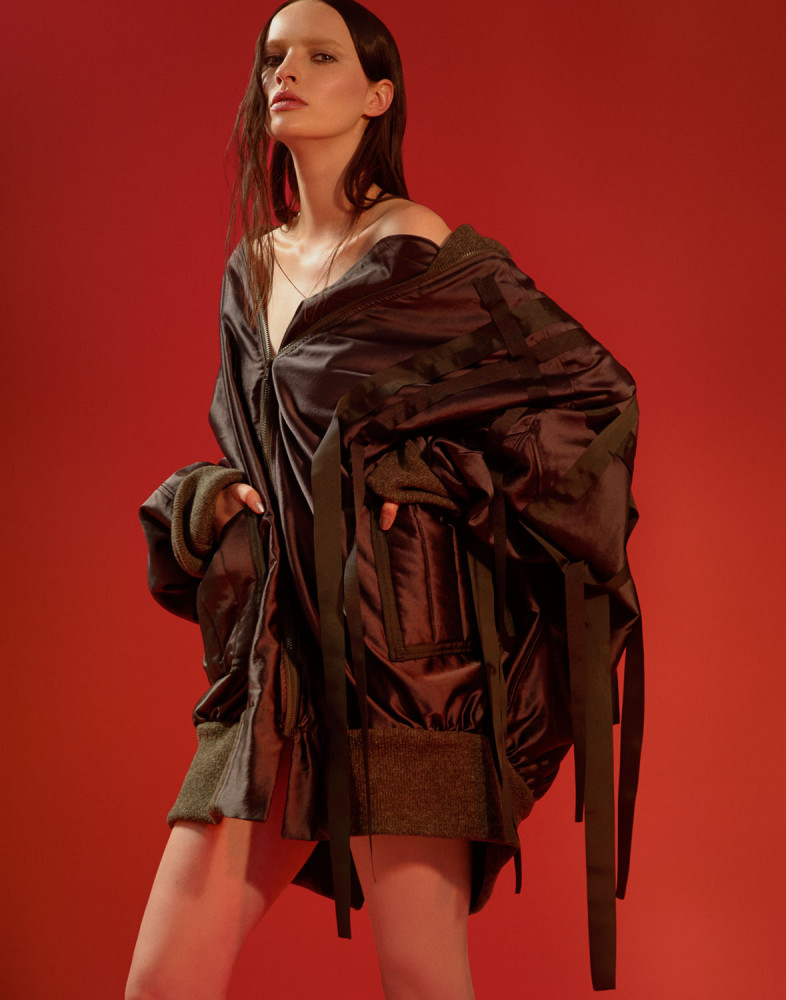
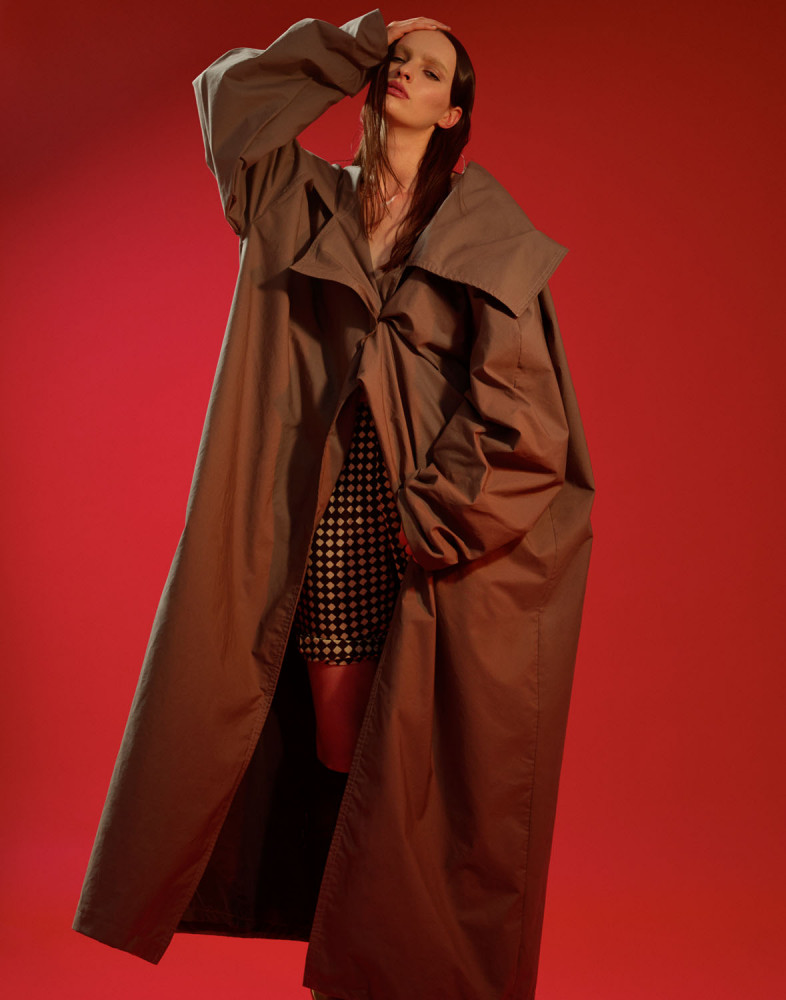
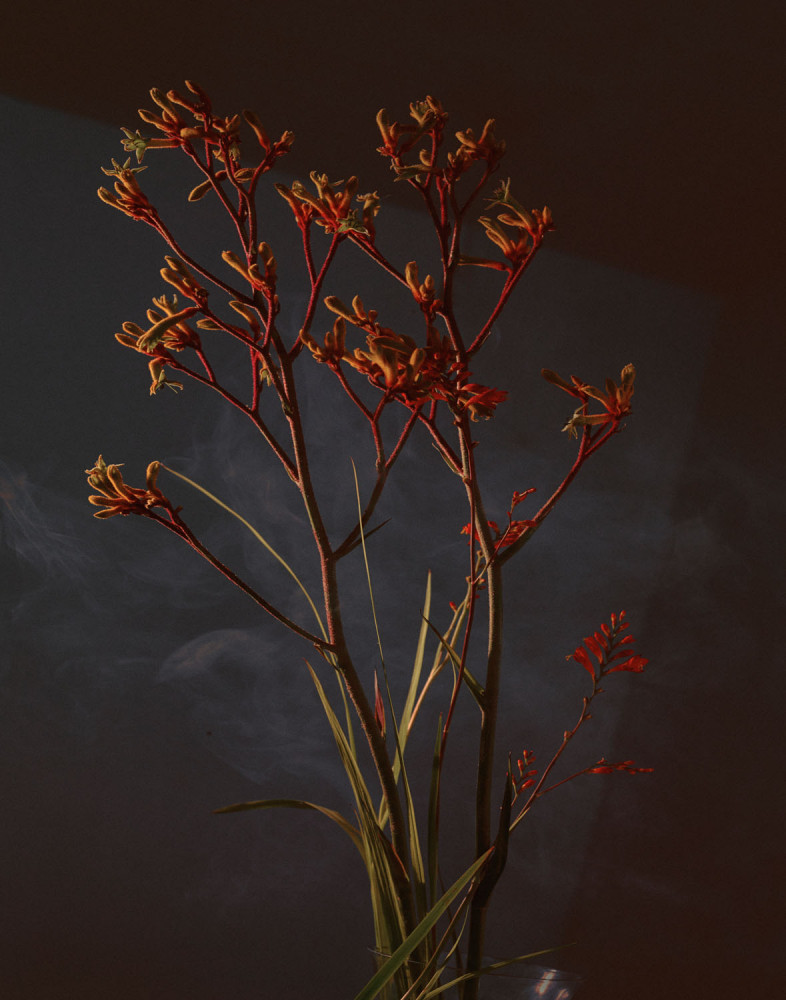
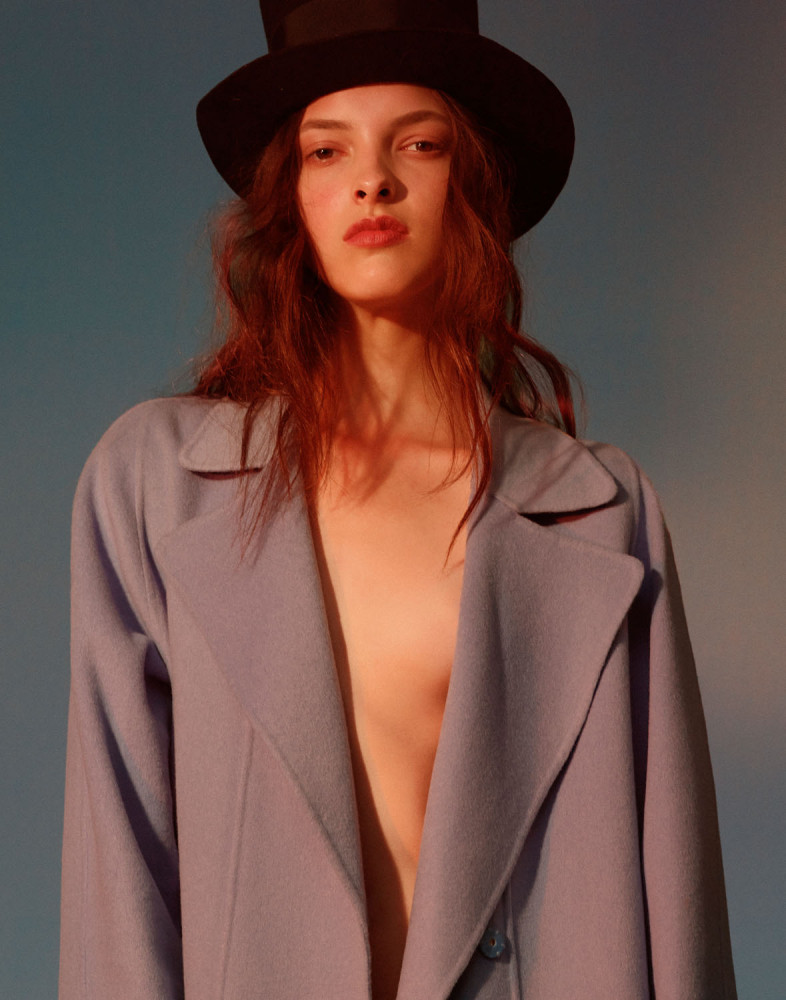
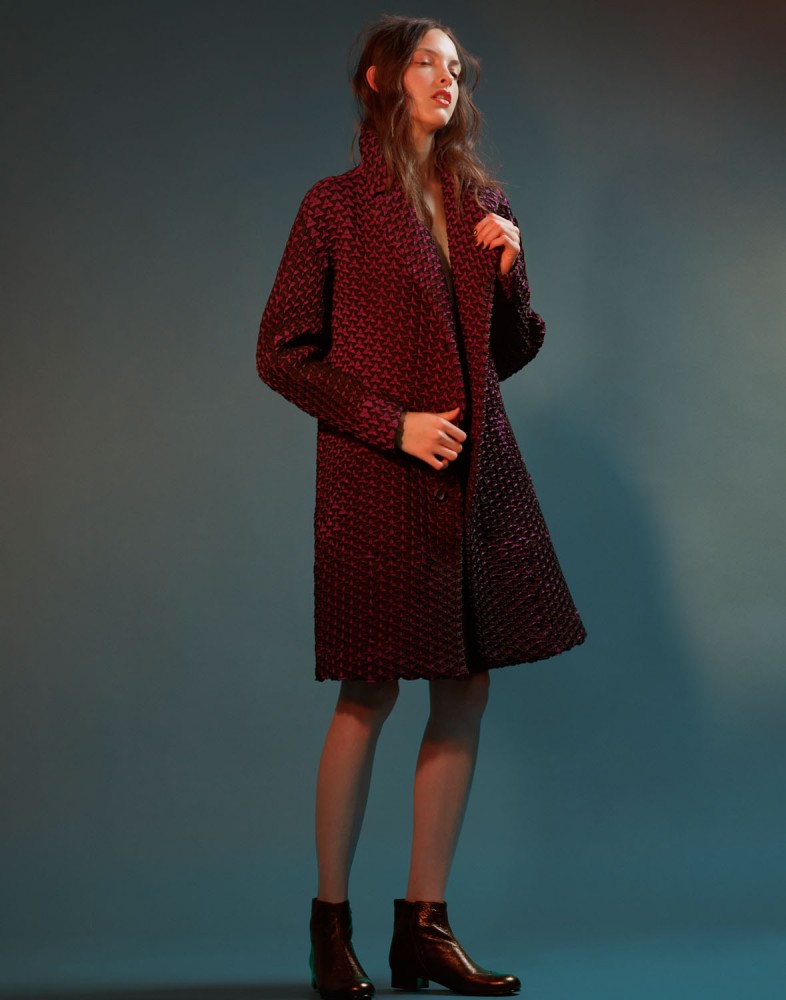
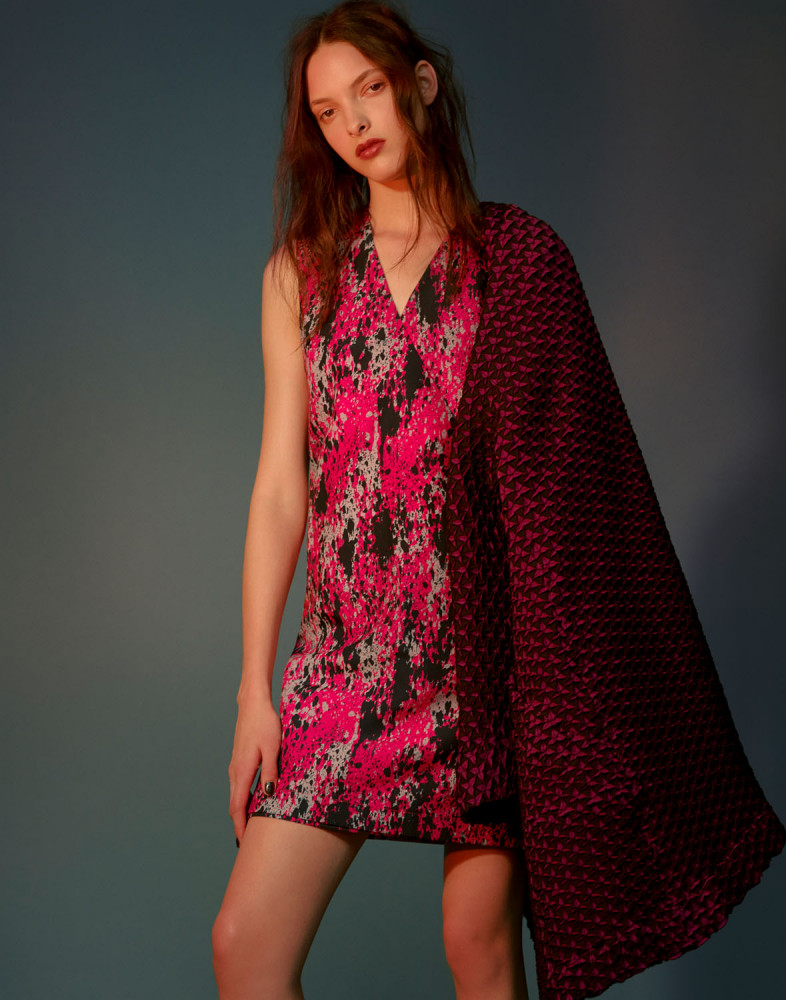
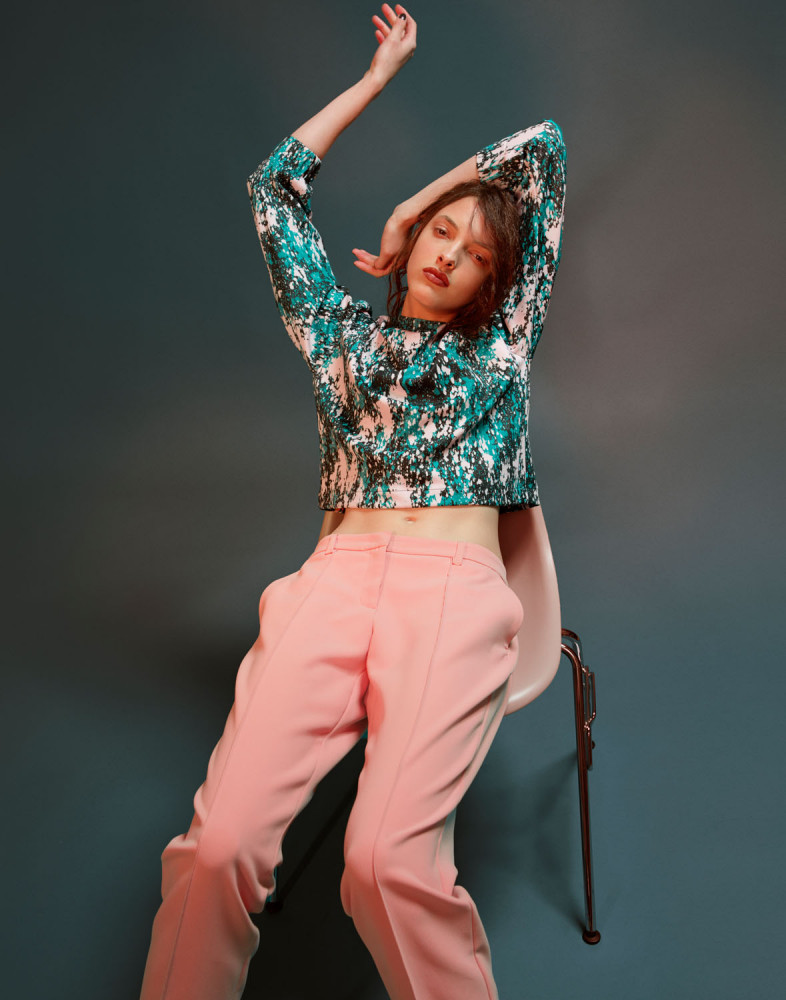
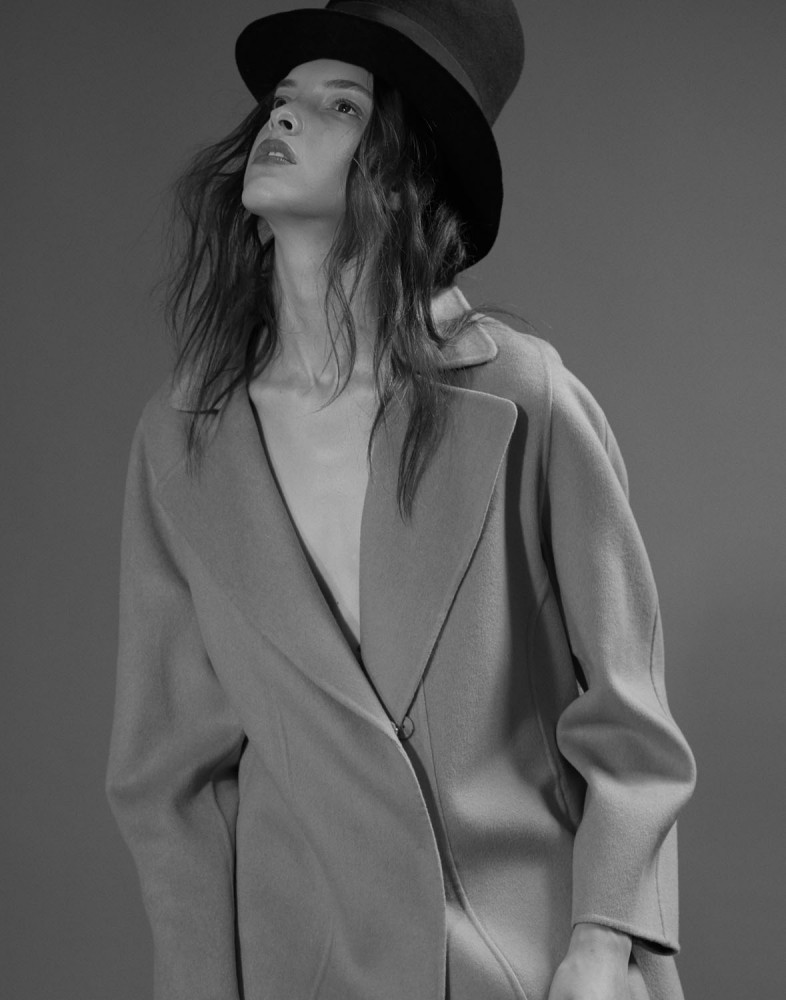
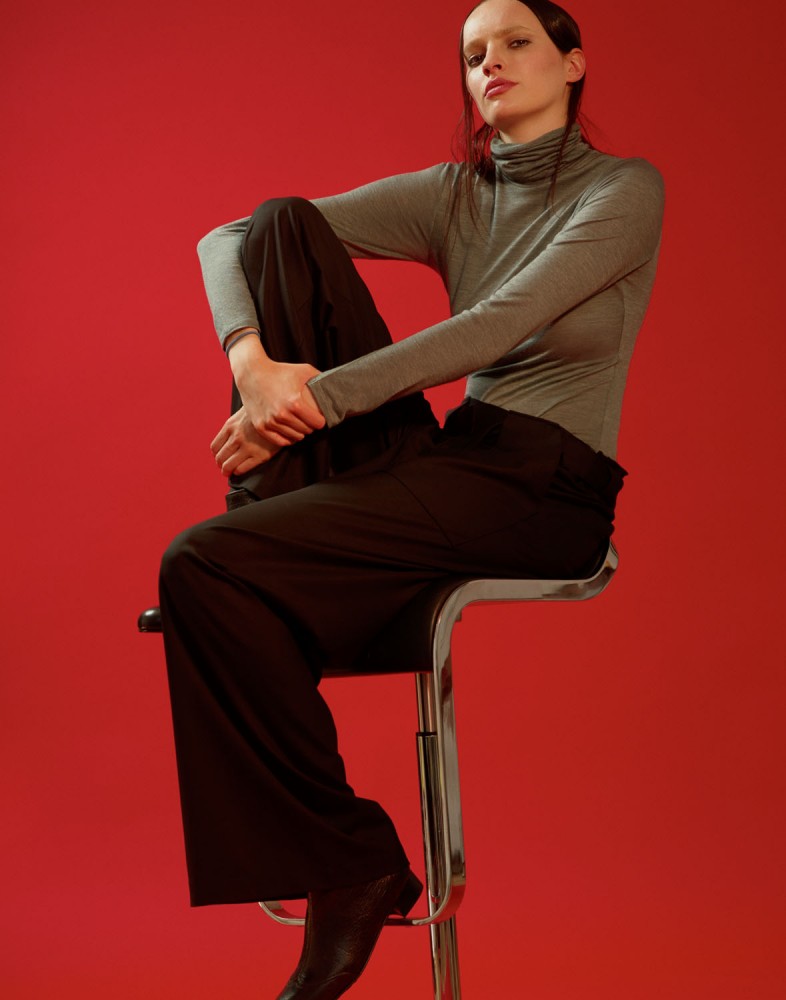
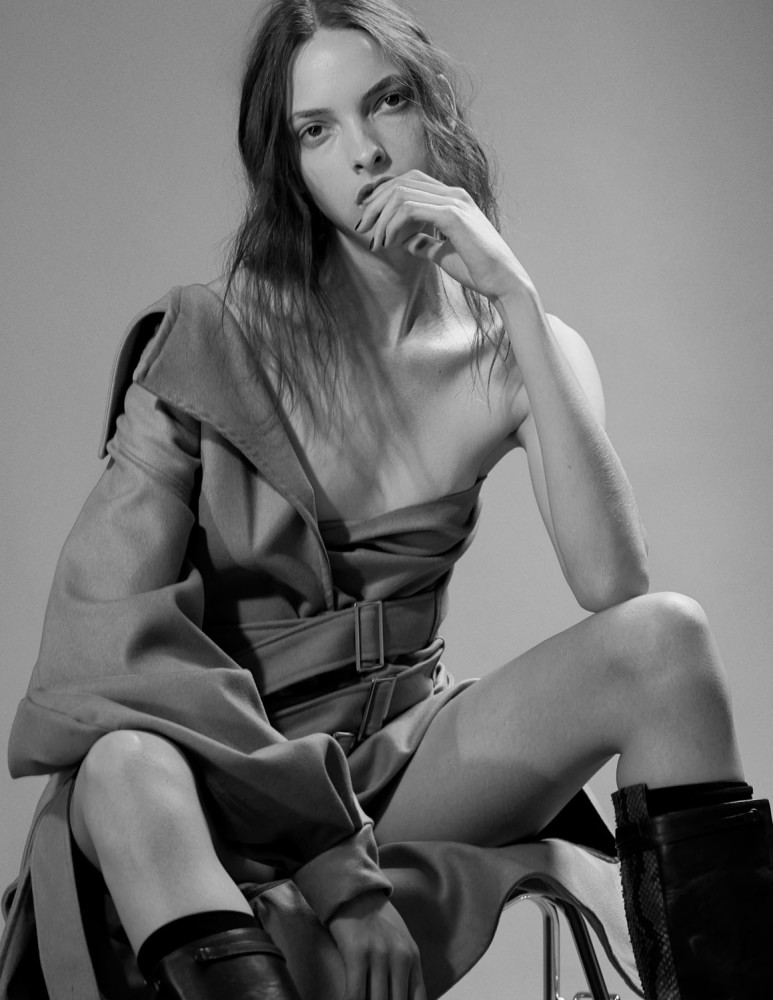
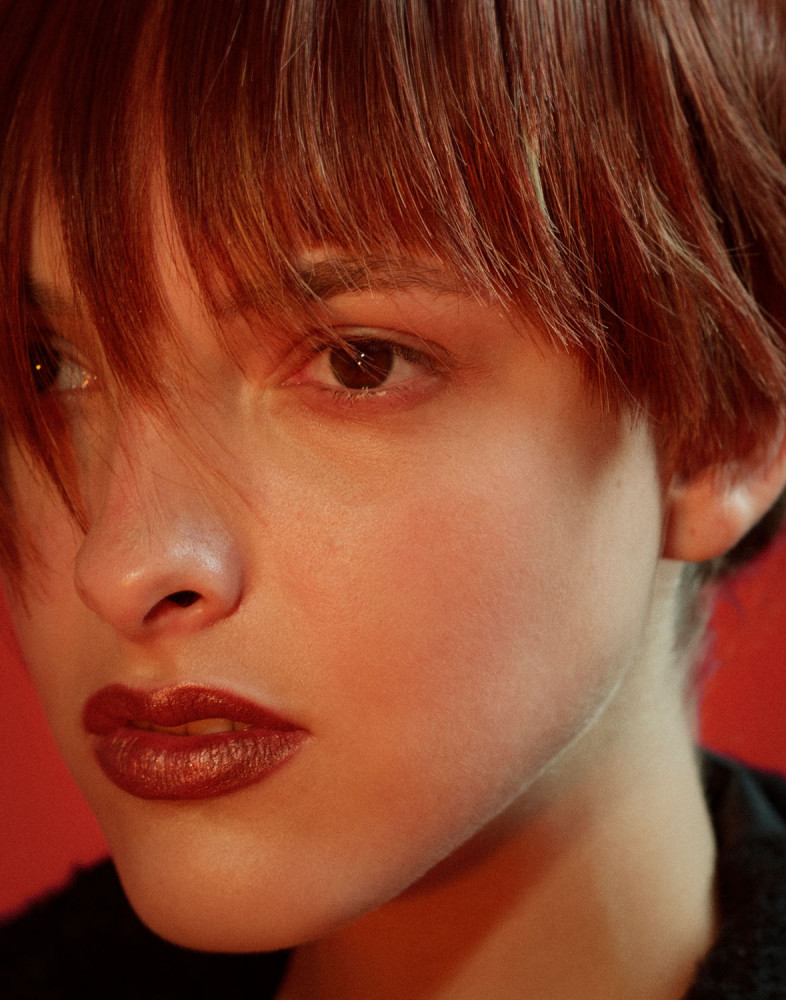
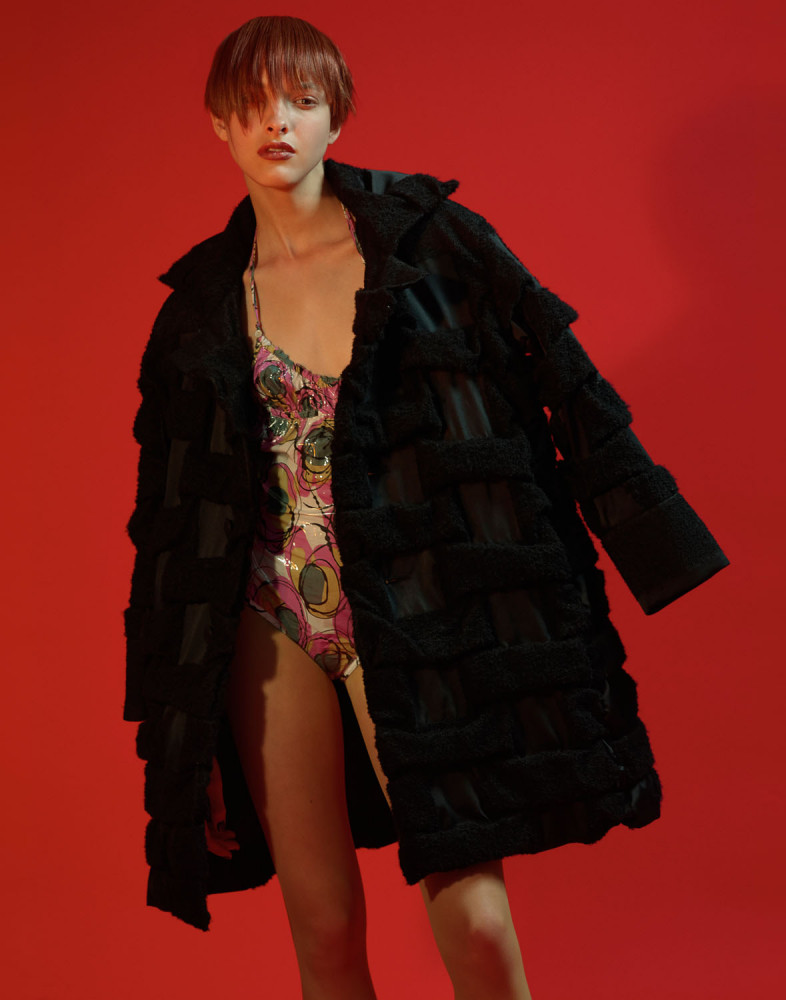

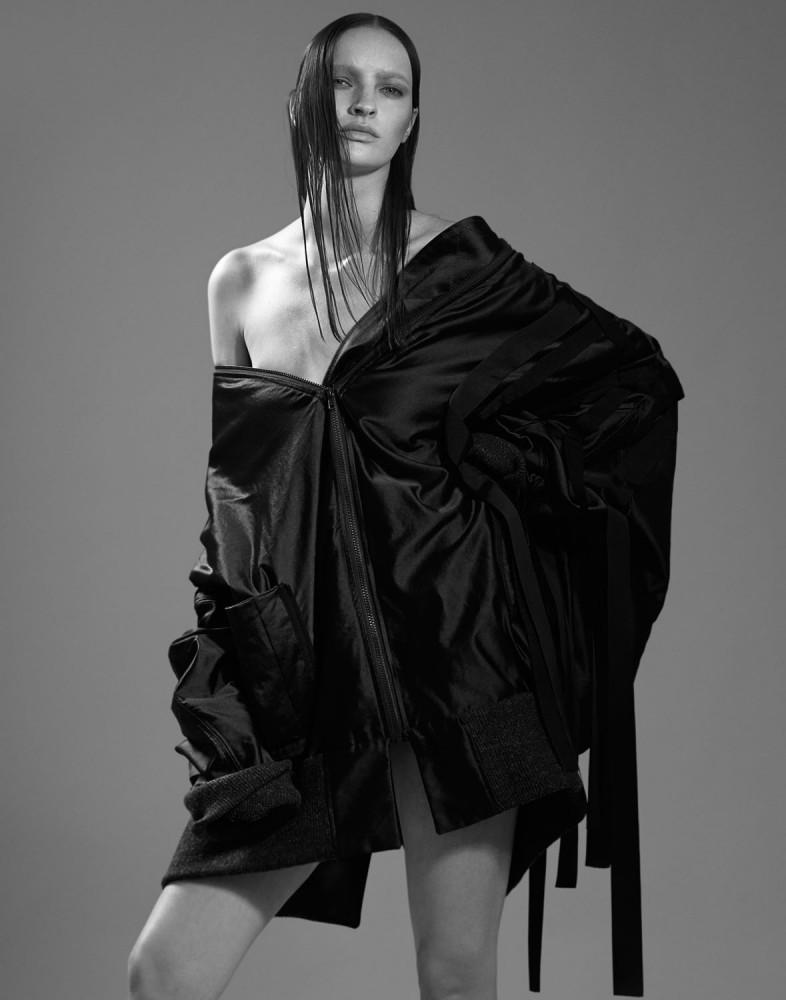
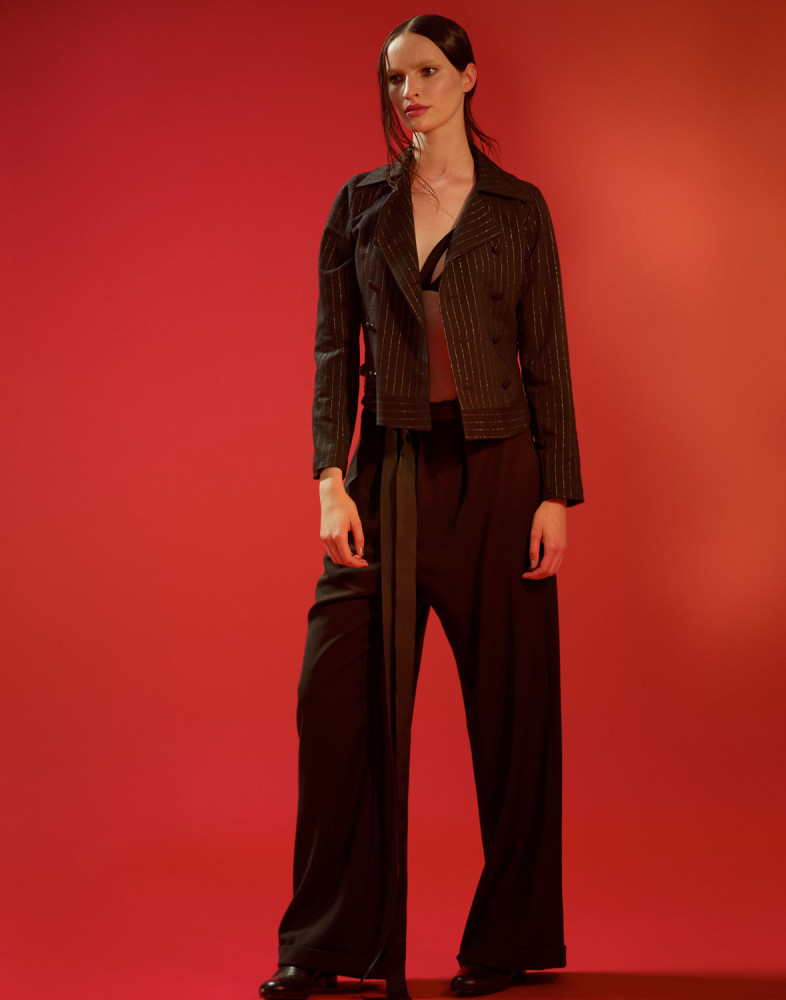
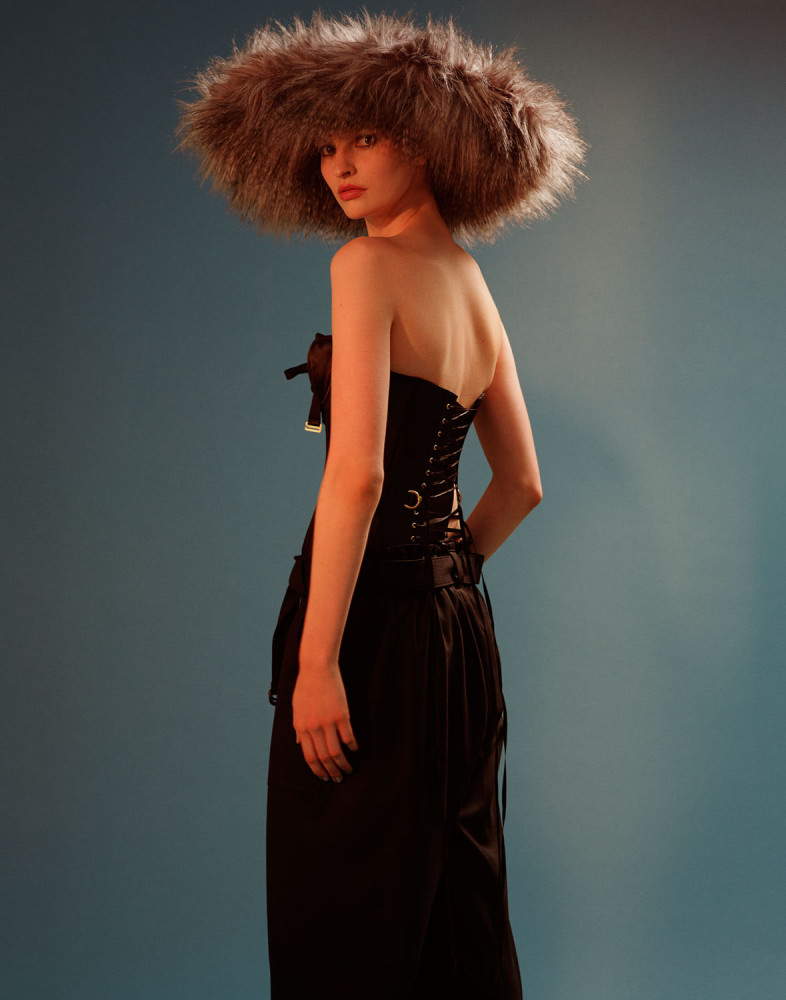
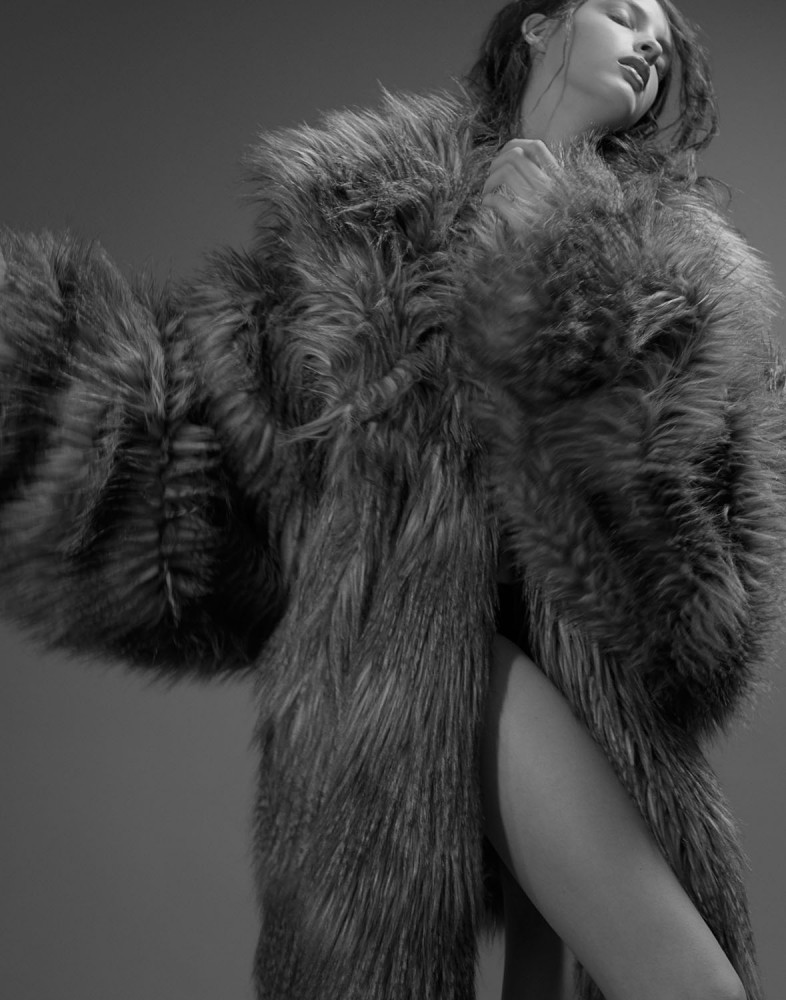
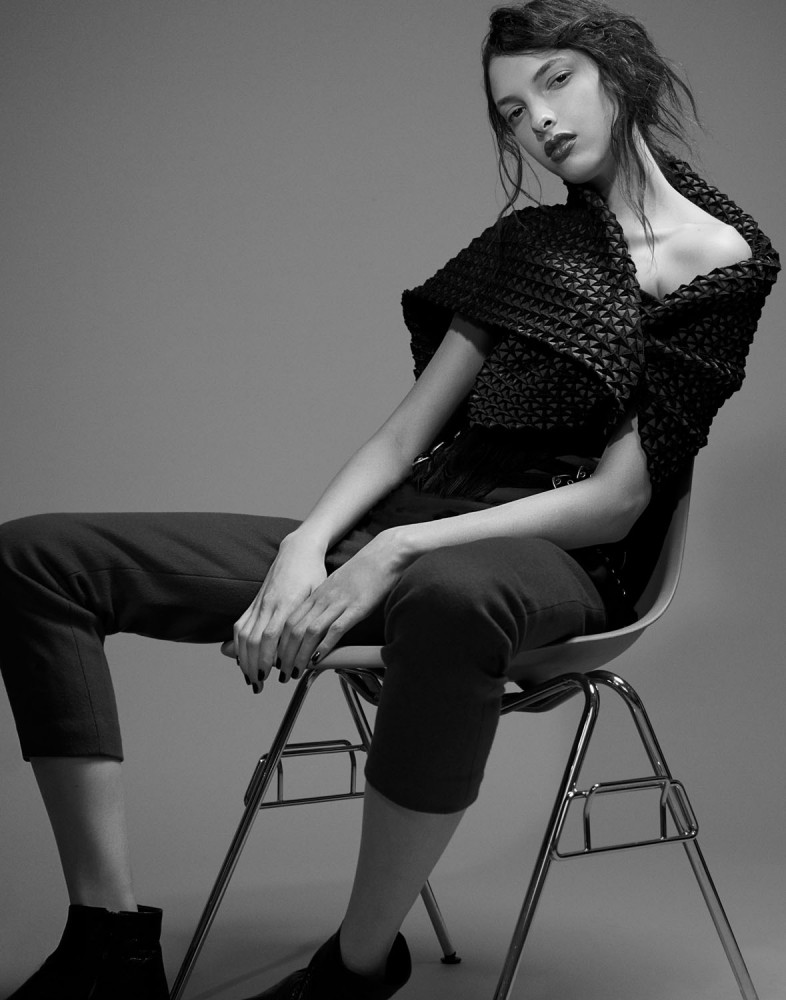
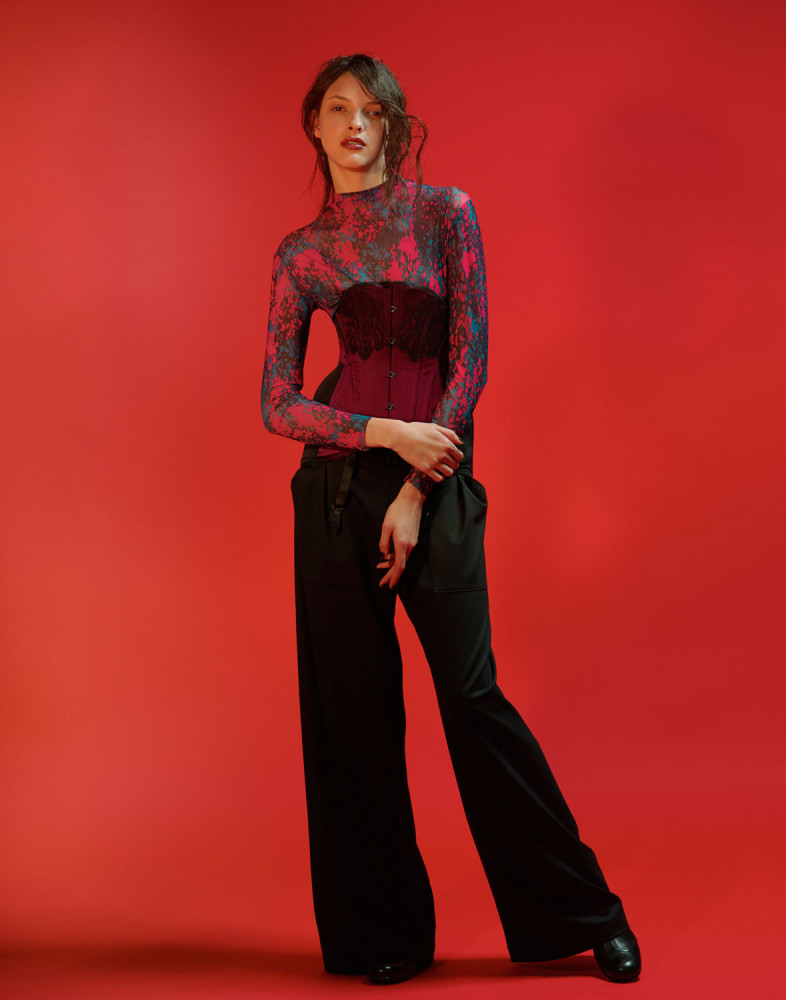





















INTERVIEW
Takahito Sasaki
Photography Takahito Sasaki Stylist Marina German Art Direction Jennifer Avins Hair Jonathan De Francesco Makeup Jennifer Mika Models Evangeline Endres @ Wilhelmina, Clarice Vitkauskas @ Next Camera Leica S with Summarit-S 35mm f/2.5 Asph., Summarit-S 70mm f/2.5 Asph., Apo-Macro-Summarit-S120mm f/2.5 Asph.
With Fiction, Takahito Sasaki has created a feature that explores minimal abstractness in a playful interaction of contrast and continuity. The unusually wide, portrait format, together with the great fashion styling by Marina German, captures a story-telling atmosphere in a cinematic approach.
S Magazine: You were born and grew up in Japan. After studying fashion design, you then worked as a fashion journalist. How and why did you get into photography?
Takahito Sasaki: I studied fashion design because I wanted to create something and I liked fashion a lot. When I was studying, my mind was very narrow and the only way I knew how to create something was to be a designer. Although it was my goal at first, being a designer wasn’t for me. During my time as a fashion journalist, I met a lot of people in the creative industries and I realised there are many ways in which you could make creations.
Although I started out taking documentary photographs, I really enjoyed it, and it drove me to want to create more. I really liked looking at photography from a young age, and I think the visuals always excited me.
You now work in London as a fashion photographer. How has the change of location influenced or changed your work?
I think where I live is very important for me. I always take inspiration from everything around me. I was born and grew up in Hiroshima, then moved to Tokyo and London. I can feel that the difference in lifestyle and culture in every place I’ve been to has added something to my base.
What defines your particular photographic style?
My photography is like looking into something between real and surreal. I'm a bystander. I’m interested in the situation created by the bystander and I think this is something that’s important to my style of photography.
What elements do you consider the most important to produce a good photo magazine series? Do you find long series more complicated than short ones?
When I’m making a photographic story the initial concept is always important, but what happens on set is just as important too. There could be something magical that wasn’t planned and I want to give room for those moments to happen. I find that with longer stories, the concept can be translated as the story becomes whole. I don’t think you have to input every detail into each image, so it allows for the individual images to be softer and more broad. This is something I find valuable in photography as a form of communication, as you are able to say things in a softer way than with words.
What is the Fiction series about? What are your looking to convey?
This shoot is like story-telling. Describing something that’s not real in a very realistic way. I think fiction is different from fantasy, but it's about making the viewer believe that there is something there. I wanted this series to explore minimal abstractness with a play on contrast and continuity, to convey the same emotions in the models and the flowers.
You have selected a special, rather unique picture format. What is the idea behind it?
I imaged this story to have a wide format from the beginning, so I kept this in mind while shooting. I think that the framing is a very important part of a photograph and, as the way that photography is shown has been changing, I think the format can change too.
How does working with the Leica S differ from other systems?
I like the colours of the Leica S very much. Whether you shoot with lighting or natural light, the colours are really beautiful. I always adjust the lighting to which system I use. With the Leica S I’ve been able to produce images I haven’t been able to with other systems. I think it can create new
images in photography that were not possible before, and that’s very exciting!
What are your photographic goals? Where do you want to go next?
I’m really interested in creating a series of images which have been developed over a long period of time. It may not be related to fashion, but I want to use photography to communicate gently. Photography is very personal for me, but at the same time I prefer not to use my photography to impose an idea directly, but rather give the viewer space to imagine.